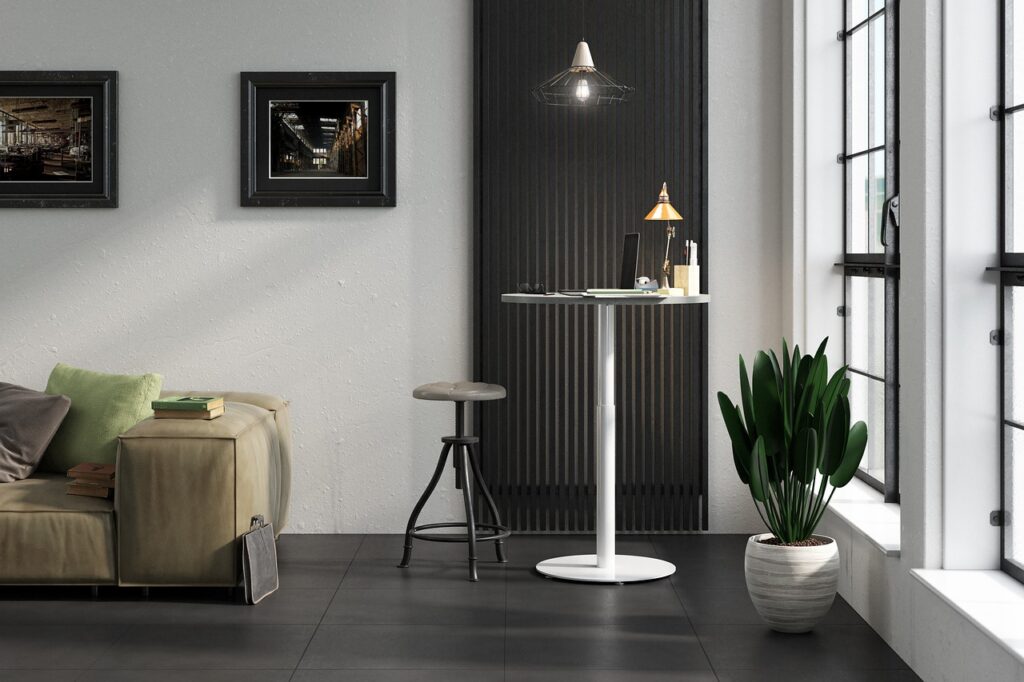In today’s fast-paced business world, the reception area is more than just a point of entry. AirbrickInfra represents a company’s first impression, a hub of activity, and a showcase of its values and culture. Technological advancements are revolutionizing the design of these spaces, transforming them into dynamic, interactive environments that enhance efficiency, visitor experience, and brand identity. Join us as we explore the profound impact of technology on the evolution of contemporary office reception areas.

Integration of Digital Signage and Interactive Displays
Gone are the days of static bulletin boards and traditional posters. Modern reception areas leverage digital signage and interactive displays to convey dynamic content and engage visitors from the moment they enter the door. High-definition screens can showcase company news, achievements, and branding messages in real time, creating a visually compelling and informative experience. Touchscreen displays further enhance interactivity, allowing guests to explore directories, browse interactive maps, or easily access relevant information.
Smart Access Control and Visitor Management Systems
Technology has streamlined access control and visitor management processes, enhancing both security and convenience in reception areas. Smart access systems utilize biometric authentication, RFID cards, or smartphone apps to grant authorized personnel entry, minimizing the need for traditional keycards or manual check-ins. Integrated visitor management platforms automate registration, notify hosts of arrivals, and issue digital badges, ensuring a seamless and professional welcome for guests while maintaining security protocols.
Virtual Receptionists and AI-Powered Assistants
Advancements in artificial intelligence (AI) have introduced virtual receptionists and AI-powered assistants to modernize customer service in reception areas. These intelligent systems can greet visitors, provide directions, answer frequently asked questions, and even schedule appointments, reducing the workload on human staff and enhancing operational efficiency. Natural language processing capabilities enable these AI assistants to deliver personalized interactions, further enriching the visitor experience and leaving a lasting impression of technological sophistication.
Wireless Charging Stations and Connectivity Hubs
Recognizing the ubiquitous presence of mobile devices in today’s workplace, contemporary reception areas often feature integrated wireless charging stations and connectivity hubs. These amenities allow guests and employees to recharge their smartphones, tablets, and laptops conveniently while waiting, fostering productivity and connectivity without the hassle of searching for power outlets. Some reception desks even incorporate built-in USB ports and power sockets, ensuring uninterrupted connectivity for digital devices.
Enhanced Audiovisual Conferencing Facilities
With the rise of remote and hybrid work arrangements, reception areas are increasingly equipped with state-of-the-art audiovisual conferencing facilities. High-definition cameras, microphones, and video screens enable seamless communication with remote colleagues and clients, transforming the reception area into a collaborative hub for virtual meetings and presentations. Integrating these technologies ensures that businesses can maintain effective communication across distributed teams while accommodating on-site visitors with superior audiovisual capabilities.
Adaptive Lighting and Environmental Controls
Technology-driven advancements in lighting and environmental controls are enhancing the ambiance and energy efficiency of modern reception areas. Smart lighting systems adjust illumination levels based on natural light conditions and occupancy, creating a comfortable and inviting atmosphere for visitors and staff alike. Automated environmental controls regulate temperature and air quality, optimizing comfort and productivity while minimizing energy consumption. These integrated systems contribute to sustainable building practices and demonstrate a commitment to environmental stewardship.

Data Analytics for Space Utilization and Visitor Insights
Harnessing the power of data analytics, businesses can glean valuable insights into reception area utilization and visitor behavior. Sensor-equipped seating arrangements and foot traffic monitoring systems track occupancy levels and visitor flow patterns, informing space optimization strategies and operational decisions. Analyzing visitor demographics and preferences enables organizations to tailor personalized experiences and anticipate future needs, further enhancing guest satisfaction and loyalty.
Conclusion
In conclusion, technology is reshaping the design and functionality of contemporary office reception area designers, transcending traditional notions of hospitality and efficiency. By embracing digital signage, smart access systems, AI-powered assistants, and advanced audiovisual capabilities, businesses are not only enhancing operational efficiency and security but also creating immersive environments that reflect their innovation and commitment to customer experience. As technology continues to evolve, so too will the potential for reception areas to serve as dynamic showcases of corporate identity and culture, setting the stage for meaningful interactions and memorable first impressions in the digital age. Join us in embracing the future of reception area design, where technology meets hospitality to redefine the art of welcoming.





